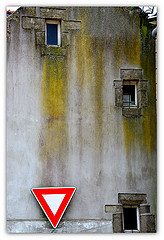 If you notice evidence of damp in Radcliffe in your home, you must deal with it right away. When there is evidence of damp in the home, it indicates there is a moisture problem arising from a leak, rising humidity levels, problems in the roof, or poor moisture removal measures.
If you notice evidence of damp in Radcliffe in your home, you must deal with it right away. When there is evidence of damp in the home, it indicates there is a moisture problem arising from a leak, rising humidity levels, problems in the roof, or poor moisture removal measures.
A couple noticed evidence in Radcliffe of damp in their home. They were unsure of the health risks that having damp can pose. As a result, they contacted Ascot Damp Proofing and requested a free estimate of their damp services. When the surveyor arrived, the couple were quite surprised by the impact damp had caused in their home, particularly with the presence of mildew, pests, and dust mites. The surveyor informed the couple that damp can have detrimental impact on their health because it promotes the growth of bacteria, mold and mildew, pests, and dust mites. Unlike bacteria that are found on a countertop which can be wiped down with an anti-bacterial product, bacteria arising from damp cannot be rid in this manner. The source of the damp has to be eradicated. Damp homes are prime breeding grounds for cockroaches, mice, and other pests. Their waste material is a known allergen and triggers asthmatic reactions, particularly in small children. Damp also leads to dust mites. In people, their presence manifests in the form of sneezing, stuffy nose, respiratory problems, and itchy eyes. The best way to combat them is to keep the home’s humidity around 50% and to remedy existing damp issues. Finally, mold and mildew are a sure fire proof of damp. Apart from leaving a black or greenish residue, it also leaves a musty smell. Mould is also responsible for several respiratory ailments. After receiving a detailed estimate about their damp problem and learning about the potential health hazards of damp, the couple decided to have their home treated for damp.
If you require treatment for damp in Radcliffe, contact Ascot Damp Proofing today. Please contact them at 07519 291 772.
